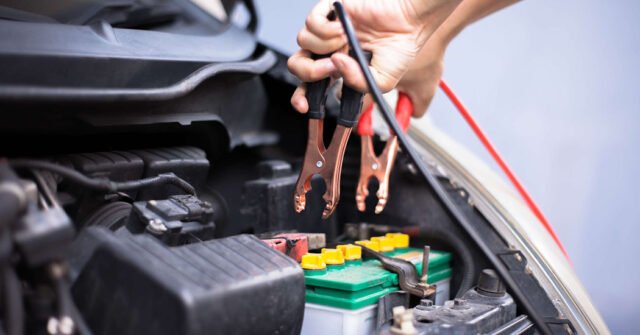Starting and charging batteries are very basic functions that assure dependable performance in numerous applications, such as automotive systems and backup power. Correct insight into the mechanism of batteries starting & charging, along with capacity restoring, is highly important to maximize the duration and efficiency of a particular battery operation. The paper considers the logic behind battery types, turn-on procedures, charging solutions, typical faults, battery preservation protocols, and safety aspects. It is through this be,st practice that individuals and organizations can prevent the untimely demise of batteries, minimize downtime, and stay at optimum energy management.
1.Knowledge of types of batteries
Starting & charging strategies of batteries differ considerably, based on battery chemistry and design. Lead-acid, lithium-ion, nickel-metal hydride, and gel cells all have different voltage characteristics, charge acceptance rates and temperature sensitivities. As an example, lead−acid batteries are commonly designed to need controlled charging voltages to avoid overcharging, whereas lithium-ion batteries need fine control of the current, to avoid thermal runaway. By identifying these differences, one can then choose the right equipment and charging procedures specific to the battery typology to protect the health of the battery ensuring that the battery will lead to a reliable good startup.
2.The significance of correct starting practices
Proper battery charging and starting procedures commence with checking that the battery can provide enough cranking current to start engines or drive-load devices. The cold cranking amps (CCA) rating is also an important indicator to measure the performance of a battery at very low temperatures. Before any starting procedure, terminals and cables should be checked concerning corrosion, good-tight lugs, and continuity. Clean secure connections reduce voltage drop and maximize current delivery. Also, a pre-start voltage check can reveal weak or disconnected batteries so that corrective measures can be taken, e.g. charging before trying a high-current start, which might otherwise damage or draw the battery still further down.
3.Principles of battery charging
The process of charging batteries involves putting electric energy in a battery to restore the chemical energy of the battery. Two fundamental charging methods namely, constant current (CC) and constant voltage (CV) are adopted in most charging applications. In CC charging a fixed current can be supplied until the battery voltage reaches a prescribed value when a CV step is used to control the current which decays whilst the voltage remains constant. Multi-stage chargers usually integrate these strategies (bulk, absorption, and float) to maximize the rate of charging and battery life. This knowledge is crucial towards designing effective batteries with the timing of effective starting and charging without either overcharging or undercharging capabilities, which are likely to result in loss of capacity.
4.Typical initial problems and remedies
Some of the more typical battery starting/charging impediments incorporate sulfation, terminal corrosion, and electrolyte stratification in flooded cells. Active materials structurally lose their surface area and conductivity deteriorates through sulfation, which is the precipitation of lead sulfate crystals. Occasionally, early-stage sulfation can be removed by delayed-stop desulfation devices or by controlled overcharging pulses. Rusty terminals raise the resistance and the heat; they should be cleaned out with a solution of baking soda periodically. In a deep-cycle flooded battery, the stratification of the electrolyte can be countered with soft equalization charges, or by manual electrolyte mixing. Resolving them in time will help to avoid gradual degradation otherwise disrupting not only initial power but also recharging capacity.
5.The best-charging methods
The use of ideal batteries’ beginning and charging methods embodies a compromise between the rate of charging and the state of the battery as well as ambient temperatures. Using a high-current bulk phase can allow faster charging yet increases the risk of overheating and gassing. More sophisticated chargers that have temperature compensation will reduce or increase the charging voltage as the temperature increases to ensure safe limits of charging. With lithium-powered batteries, overcharging can be prevented by carefully observing the manufacturer’s specified cut v voltages during charging. The long standby times that often occur on boats can be cured by having the batteries trickle charged at currents too low to overload the internal chemistry, and within this constraint having the batteries kept fully topped off so that they are ready every time the batteries are desired to be started.
6.Longevity maintenance
Regular care of batteries in starting and charging systems contributes a lot to their longevity of service. Capacity fade is observed before failure when load tests of the simulated starting conditions are periodically performed. Daily hydrometer measurements in flooded cells measure specific gravity and state of charge, and corrective additions of electrolytes can be indicated. Testing and securing connections in cables helps in avoiding voltage loss. Vent caps should be cleaned, and the ventilation needs to be adequate to reduce electrolyte loss due to evaporation and corrosion. Scheduled equalization charging to balance capacity within some types of batteries avoids capacity imbalances between cells and helps to wear the cells out regularly and evenly, to maintain starting capability.
7.Starting & charging safety considerations
Most of the safety concerns of batteries are shared with removing (starting) and charging procedures, which can generate explosive gases, high currents, and spill acid. Hand protection items should include gloves, as well as goggles and aprons to avoid cases of acid burns. Chargers should be fitted with correct polarity, to prevent short-circuiting or charge reversal, which can permanently damage the battery. Hydrogen gas produced in the process of charging must be dispersed with sufficient ventilation; confined atmospheres raise the costs of explosion. Moreover, charging equipment must be provided with overcurrent and overvoltage protection, and one must act by the recommendations of the manufacturer to reduce risks.
Conclusion
A thorough knowledge of the principles of batteries and starting and charging guarantees a sure supply of power and increases battery life duration in diverse applications. Operators can maximize performance and reliability by using proper chargers, proper starting procedures, correct maintenance of common problems solved and keeping batteries properly maintained. Puts stress on safety with appropriate care and safeguards to ensure the safety of both equipment and personnel. These findings make it easy to control battery systems sufficiently well to achieve long-term energy efficiency and operational reliability. Empire Auto Holliston is the preferred location when it comes to professional automotive services and expert battery maintenance and services.







